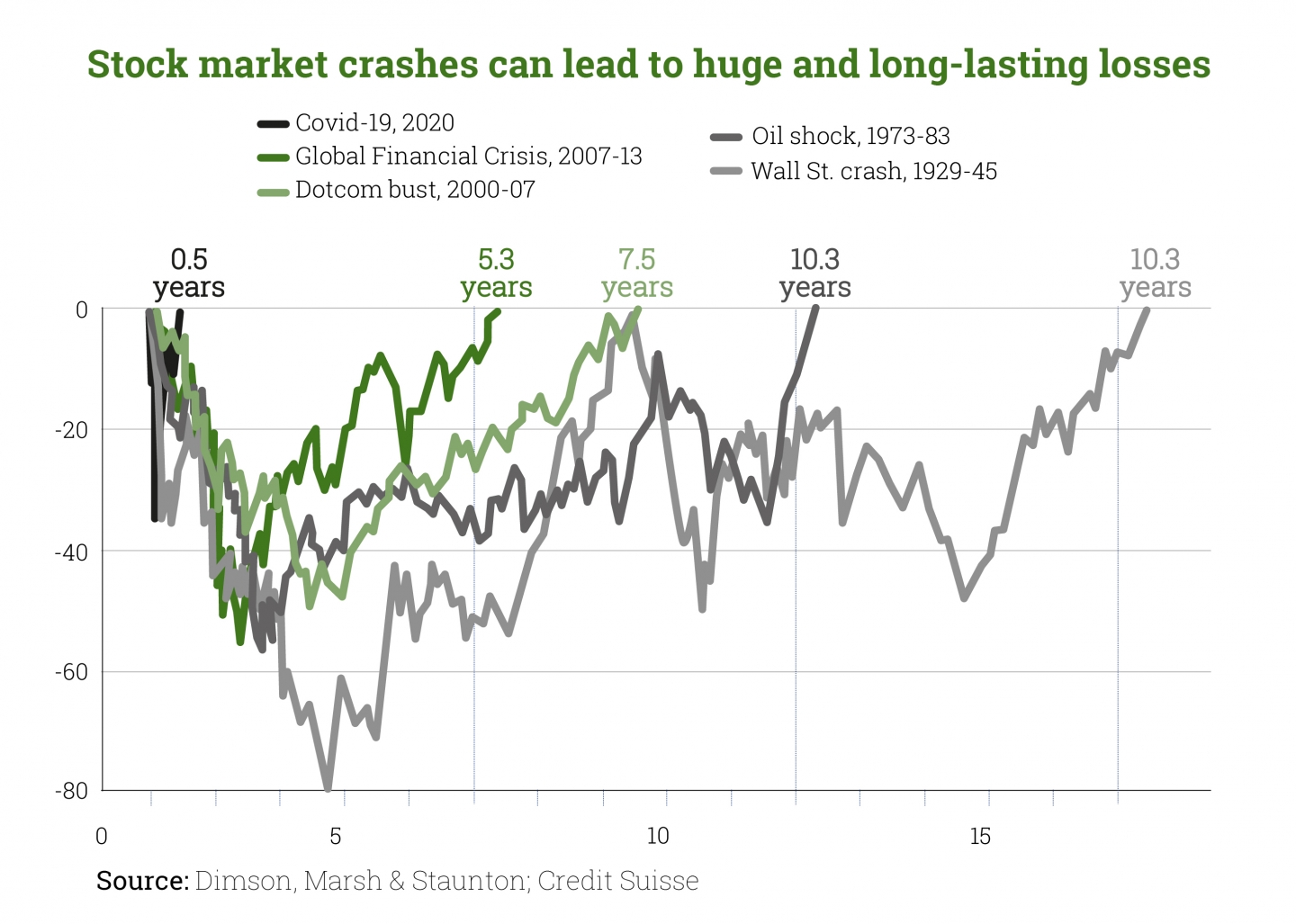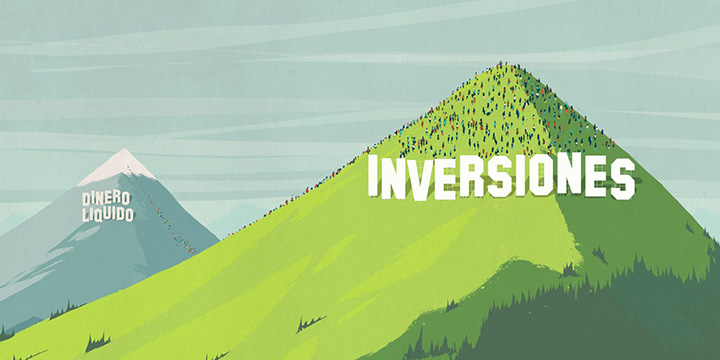The year 2020 will undoubtedly be etched in everyone’s memory, and when it comes to investment, it could not be any less so. The fastest crash in the history of the Ibex-35 dragged the benchmark index of the Spanish stock market to its worst ever result: a fall of 22% in just one month.
In none of the previous crises, such as that of August 1998 with the well-known rouble crisis or that of late 2008 when Lehman Brothers went bankrupt, has any month performed worse than March 2020, both for the stock markets and for the global economy. Many countries suffered a near-total paralysis of activity, leading to a level of economic contraction not seen before.
However, it was not only the impact on the markets that was devastating. The mobility restrictions imposed during lockdown and the closure of non-essential activities led to a historic drop in household consumption, as well as an extraordinary increase in household savings, which set an all-time high of 22.5% of household disposable income in June 2020.
As a result, the volume under management in investment funds fell by nearly EUR 24 billion in just a few weeks, taking its toll on investment managers in the face of widespread panic among retail investors, who withdrew nearly EUR 6 billion from their funds.
However, despite what happened during 2020, and unlike previous crises, the industry’s rebound effect was extraordinary, especially given the short period of time since the start of the health crisis. This is shown in the following graph.

It is interesting to see how the pandemic marked the development of the markets and conditioned the behaviour of savers who, after experiencing a first quarter with great uncertainty, intensified their confidence in collective investment in the following three quarters.
This was mainly due to the optimism generated by the Brexit deal at the end of the year and news of the start of the vaccination campaign, not to mention monetary stimulus from the EU and the U S. All this marked a new upward trend in the last month of 2020 in the financial markets, accounting for more than half of the monthly increase in investment fund assets. As a result, the sector managed to maintain its volume of assets, closing the year at EUR 276,497 million.
We see this positive trend continuing through 2021, with unitholder confidence on the rise. This is demonstrated by the latest data published by Inverco, which, during the first five months of the year, show that new money attracted by investment funds already accumulated 11,580 million euros in net inflows, an increase of 1.1% compared to April and thus reaching a new all-time high for the sector, which is gradually forgetting the hard blow dealt by the outbreak of the COVID-19 pandemic, just over a year ago. In short, the assets of investment funds marketed in Spain amounted to EUR 294,765 million at the end of May.
Among the catalysts behind this good run we continue to find the good momentum in the stock markets, with highs in the main North American indices and stock markets in some emerging countries that are showing good prospects, so the flow of money is going strongly into funds, with particularly favourable performance in those that invest in equities.
Interest in active management
We are experiencing some inflationary pressure as a result of the scenario of strong fiscal and monetary stimulus in response to the pandemic, leading to an improved economic outlook. In this context, it is logical for investors to consider what to do with our money, how to face this new scenario with possible price rises which, if they occur, will cause real income, whether coupons, dividends, interest, etc., to fall. It is worth noting that in Spain there is more than EUR 1.6 trillion invested in long-term products that do not even beat inflation. It is certainly a time to stay away from fixed-income investment, whether public or private, and protect our savings by investing in real assets, such as equities.
And the data proves it, once again. According to the latest figures, domestic equity funds have grown the most as a result of the good performance of the domestic market and the subscriptions registered during the month. In annual terms, they are growing by nearly 19%, identical to the growth of international equity funds, which now have around 7 billion net subscriptions.
In terms of returns, the recovery of the markets has allowed the average year-on-year return of investment funds to stand at 10.2% in May, with the equity category being the best performer, with returns above 30% in all cases.
This performance is justified not only because of the aforementioned cyclical reason, such as the negative trend of interest rates, which forces unitholders to seek extra returns on their investments, but also because of another, more structural reason, such as the greater interest in financial literacy of the average Spanish saver.
It is in this process where investment fund managers such as Cobas AM are playing an essential role in spreading financial literacy to all levels of society, from the smallest savers to the largest fortunes. We, in collaboration with Value School, make available a wide variety of videos, articles, podcasts and texts in order to increasingly promote the financial culture of savers.
In short, good news for a sector that has been able to demonstrate its resilience in such a difficult year for everyone and, above all, that faces the coming months with great optimism, both in terms of inflows of new money and product returns. In fact, it is expected that 2021 will end with EUR 552 billion between investment funds and SICAVs, 5.1% more than in 2020, with domestic and international funds once again driving this figure.
Did you find this useful?
- |







